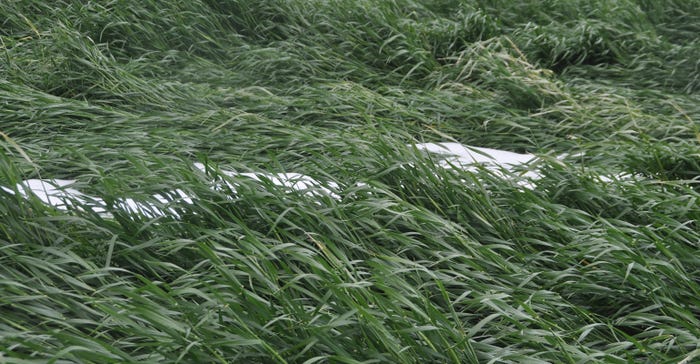
Usually, when the annual Winter Wheat Quality Tour wraps up after three days of surveying fields across the state, participants come away feeling like they have a pretty good idea what harvest is going to look like.
After a late-season blizzard left thousands of acres of wheat flat and snow-covered, it was impossible to calculate what the harvest in western Kansas might look like. Wheat is an extraordinarily resilient crop. When the largest heads are damaged or killed, the plant has the ability to divert energy to smaller, later heads and boost their growth.
Kansas State University agronomists say it will be another week or so before they can be sure what the impact of the storm will be. Because the weather had been very warm ahead of the storm, the ground was warm, and the heavy layer of snow could have provided insulation from the cold air above.
"It might pop right back up and make grain," said Romulo Lollato, Extension wheat specialist at Kansas State University. "However, wheat that has been damaged might be more susceptible to disease during the rest of the season, and lodging might be a larger-than-normal problem near harvest."
By Friday, Lane County farmer Vance Ehmke, who had almost 3,000 acres flattened by the storm, said that he is seeing some of the wheat standing back up.
"I think the stuff that was just flattened may be OK," he said. "We also have a lot of plants where the stems have been bent over or snapped off. I think we're going to lose those."
Wheat quality tour members simply did not survey flattened fields, so the harvest calculations they made are for the rest of the state. They came up with a calculated statewide yield of 46.1 bushels per acre, down from the 48.6 that the tour group calculated last year. The big question is how many acres will be harvested.
The tour "best guess" of a total harvest came in at 281,707,913 bushels — a number that clearly indicates the roughly 40 people who entered a guess for the total harvest clearly expect fewer than the 7.5 million acres planted to wheat last fall to be harvested. That would bring a harvest of 345,750,000 bushels.
The reduced total harvest indicates that the group collectively came to the conclusion that about 1.4 million acres will be abandoned, either because of the damage from the blizzard or from other causes such as a severe infection of wheat streak mosaic that was the biggest danger to the crop before the weather event struck.
Over three days, participants in the tour made a total of 469 stops to survey fields in most of the counties in the western three-quarters of the state. They noted heavier-than-usual pressure from disease, especially from wheat streak mosaic and barley yellow dwarf. Some stripe rust and leaf rust were noted, and agronomists also warned that there has been leaf rust and stem rust in Oklahoma and Texas.
Tour members also heard reports from Colorado and Nebraska surveys on Tuesday night and a report from Oklahoma's survey on Wednesday night.
Colorado had 2.2 million acres planted, and harvest is estimated at 31.5 bushels per acre for a total production of 69.5 million bushels, down from 105 million last year. Nebraska reported that it expects yields of about 40 bushels per acre and total production of 41.8 million bushels on 1.1 million acres, down from 70.74 million bushels last year.
Oklahoma, which has also struggled with much higher-than-usual infections of wheat streak mosaic, had 4.5 million acres planted and expects a harvest average of about 33.7 bushels per acre for a total production of 100 million bushels, down from 136.5 million bushels last year.
About the Author(s)
You May Also Like




